Susceptibility-weighted imaging: technical aspects and clinical applications, part 2
- PMID: 19131406
- PMCID: PMC3805373
- DOI: 10.3174/ajnr.A1461
Susceptibility-weighted imaging: technical aspects and clinical applications, part 2
Abstract
Susceptibility-weighted imaging (SWI) has continued to develop into a powerful clinical tool to visualize venous structures and iron in the brain and to study diverse pathologic conditions. SWI offers a unique contrast, different from spin attenuation, T1, T2, and T2* (see Susceptibility-Weighted Imaging: Technical Aspects and Clinical Applications, Part 1). In this clinical review (Part 2), we present a variety of neurovascular and neurodegenerative disease applications for SWI, covering trauma, stroke, cerebral amyloid angiopathy, venous anomalies, multiple sclerosis, and tumors. We conclude that SWI often offers complementary information valuable in the diagnosis and potential treatment of patients with neurologic disorders.
Figures
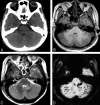


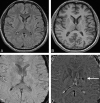

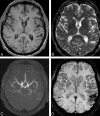

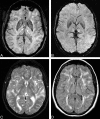

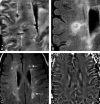




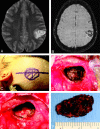


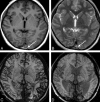




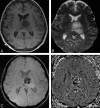




Comment in
-
Susceptibility-weighted MR phase imaging can demonstrate retrograde leptomeningeal venous drainage in patients with dural arteriovenous fistula.AJNR Am J Neuroradiol. 2011 Mar;32(3):E54. doi: 10.3174/ajnr.A2457. Epub 2011 Feb 17. AJNR Am J Neuroradiol. 2011. PMID: 21330390 Free PMC article. No abstract available.
References
-
- Brown AW, Elovic EP, Kothari S, et al. Congenital and acquired brain injury. Part 1. Epidemiology, pathophysiology, prognostication, innovative treatments, and prevention. Arch Phys Med Rehabil 2008;89:S3–8 - PubMed
-
- Tong KA, Ashwal S, Holshouser BA, et al. Hemorrhagic shearing lesions in children and adolescents with posttraumatic diffuse axonal injury: improved detection and initial results. Radiology 2003;227:332–39 - PubMed
-
- Tong KA, Ashwal S, Holshouser BA, et al. Diffuse axonal injury in children: clinical correlation with hemorrhagic lesions. Ann Neurol 2004;56:36–50 - PubMed
Publication types
MeSH terms
Grants and funding
LinkOut - more resources
Full Text Sources
Other Literature Sources
Medical
